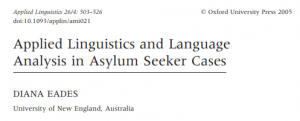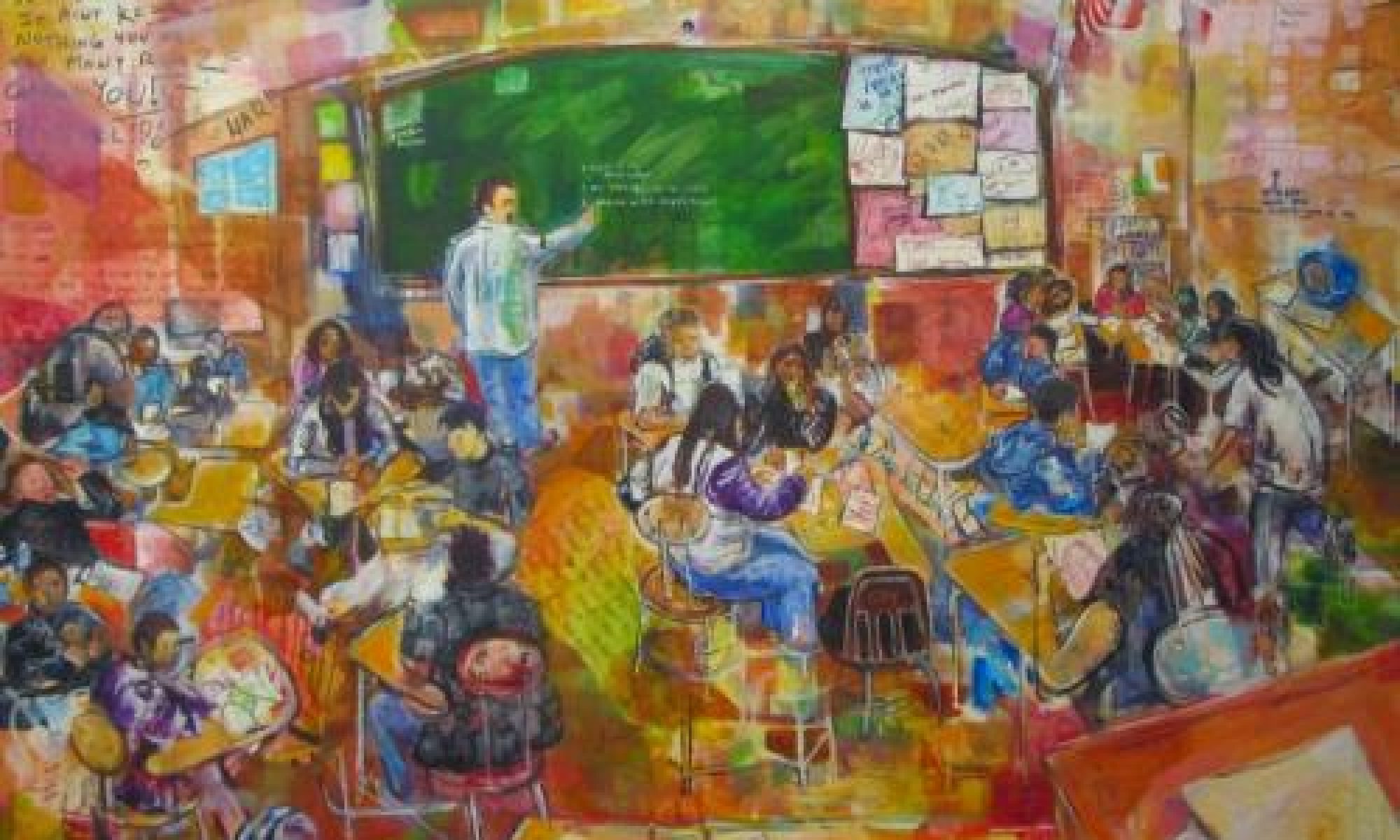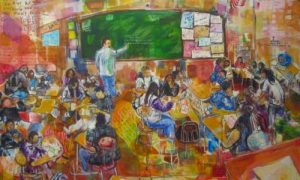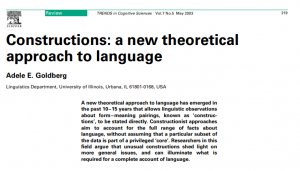PDF #8 – Diana Eades – Applied Linguistics and Language Analysis in Asylum Seeker Cases

When asylum seekers flee persecution on war in their home countries, they often arrive in a new country seeking asylum. Without documentation that can prove their nationality. They are thus open to the accusation that they are not actually fleeing persecution and/or war, but they are from another country and they are merely seeking ‘a better life’. Indeed, among those who seek asylum there may well be some such people. Anyone arriving in such a way without a genuine fear of persecution in their home country cannot qualify for refugee status.
In order to test nationality claims of asylum seekers, a number of governments are using ‘language analysis’. These are based on the assumption that the way the person speaks contains clues about their origins. While linguists would not dispute this assumption. They are disputing a number of other assumptions, as well as practices, involved in this form of linguistic identification. This paper presents recent developments in this area of applied linguistics. It includes the release of Guidelines by a group of linguists concerning the use of language analysis in such asylum seeker cases. It concluded with discussion of the role of applied linguistics in questions of national origin.
After reading “Applied Linguistics and Language Analysis”. You can check important issues for ESL teachers on the section PDFs. And visit my channel by Youtube.






